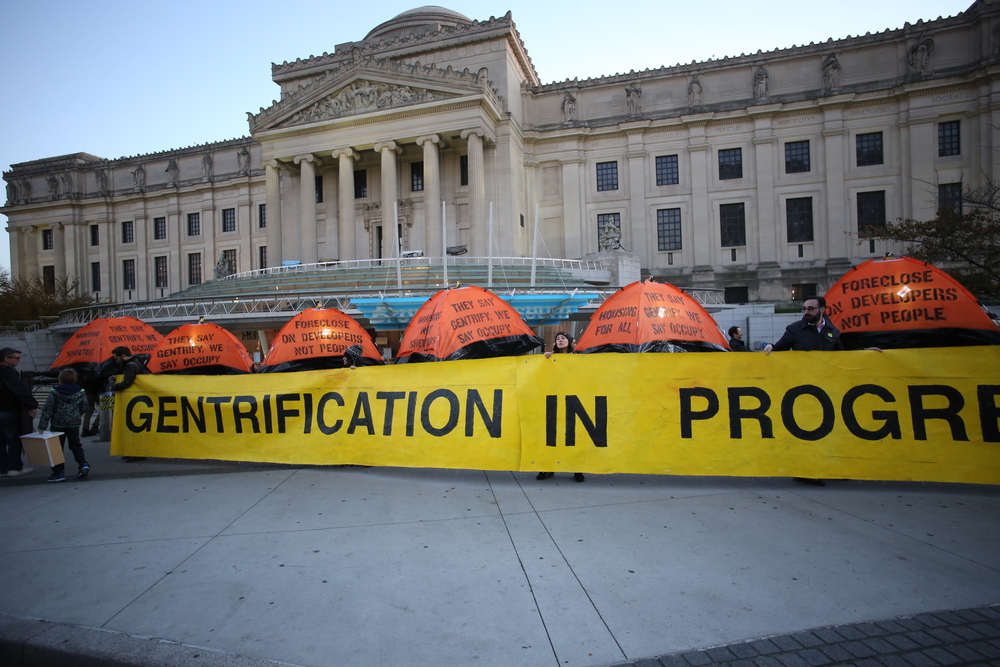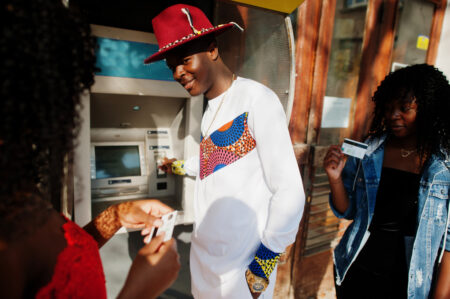An augmented reality-based project is shining a light on the impact of gentrification in Austin, Texas by paying tribute to the businesses that once existed there.
Created by artist Harper Biewen, the initiative, known as “What Once Was,” uses a QR code to allow people to use their phones as a device that’ll take them on a virtual tour. Using augmented reality, viewers can see animations of what the previous BIPOC-owned businesses around Austin looked like. Participants are also given insight into what these businesses did and their impact on the community, opening up their eyes to the negative effects of gentrification.
“I was driving down E 5th St and feeling somewhat disgusted by how much it had changed–the street is lined with luxury apartment complexes, a Target, a Whole Foods, multiple pilates studios, a blow dry bar, and an AT&T,” said Biewen. “I was thinking about the differences between this street and the same street 10 years ago, and how shocking it would be if you could see the two simultaneously. “
The project recently took part in South by Southwest, otherwise known as SXSW. Held in Austin, SXSW is a festival that brings people together to celebrate tech, film and music. At the event, “What Once Was” was offered as a free event and was supported by a panel discussion as well as a market with Black-owned businesses selling their products.
Working alongside Biewen and the rest of the team that made “What Once Was” are nonprofit organizations Six Square and E4 Youth. Based in East Austin, Six Square’s focus is on keeping the Black communities and history in the area alive through culture, education and economic means.
Also based in Austin, E4 Youth’s mission is to help strengthen the younger generation’s interests to lead them down a successful career path. The nonprofit organization is also working on teaching students the media and technological skills that can preserve Austin’s history in their “Austin Digital Heritage” project.
Through the project and the organization’s Creative Leadership Academy, E4 Youth and the team behind “What Once Was” offered young students from underrepresented communities a paid internship. During the experience, the students had the ability to explore their interest in augmented reality and learned the skills necessary to succeed in the tech world while also speaking out against gentrification.
“One of the E4 students, Darnell Wilson, learned how to create AR experiences just for this project and produced 3 out of the 5 sites. It was incredible to see how quickly he picked it up,” said Biewen. “Other students were very involved in the marketing aspects of the project and brought a lot of great ideas, one being a chalk mural that poses the question “What do you miss most about East Austin?” The mural is now a permanent installation on E 11th St. in Six Square’s district.”
Gentrification is a growing issue for the Austin area. According to a report by the Federal Reserve Bank of Dallas, the wealth and the education-level increase of the city has led to a 20% increase in home price growth in Austin, pushing out middle-income and low-income homeowners typically in the Black and Brown communities. With Austin becoming whiter, the change in customers is forcing multiple businesses to shut down.
Jumpolin, one of the locations in the “What Once Was” program, was forced to close its doors after years of serving the community. Owned by Monica and Sergio Lejarazu, the store sold party supplies and pinatas for decades before it was abruptly demolished without any notice. After getting attention for their story, Jumpolin went on to reopen again in 2020. However, as a result of the changing demographics, the owners announced they weren’t getting enough business to keep the store open.
“I’ve largely considered the target audience of this project to be Austinites like me–white folks in their 20s who moved to Austin in the past 5 years. Those are the people who are coming in and shifting the culture,” said Biewen. “If we can make that demographic aware of the history here and provide a resource for them to support existing BIPOC-owned business, maybe we can preserve some of those precious pieces of Black and Brown Austin that still exist.”








